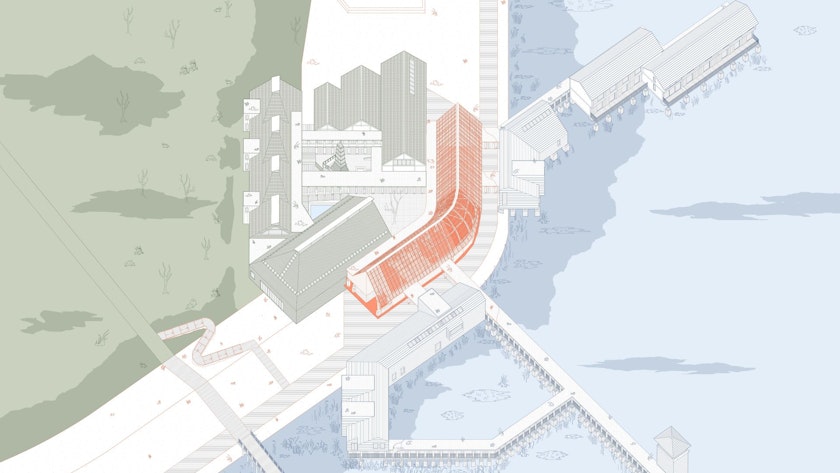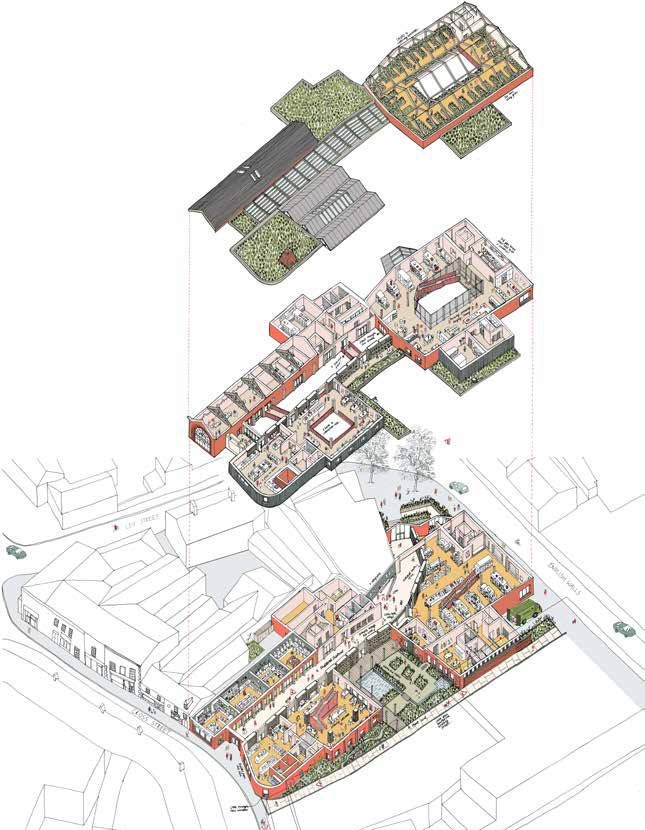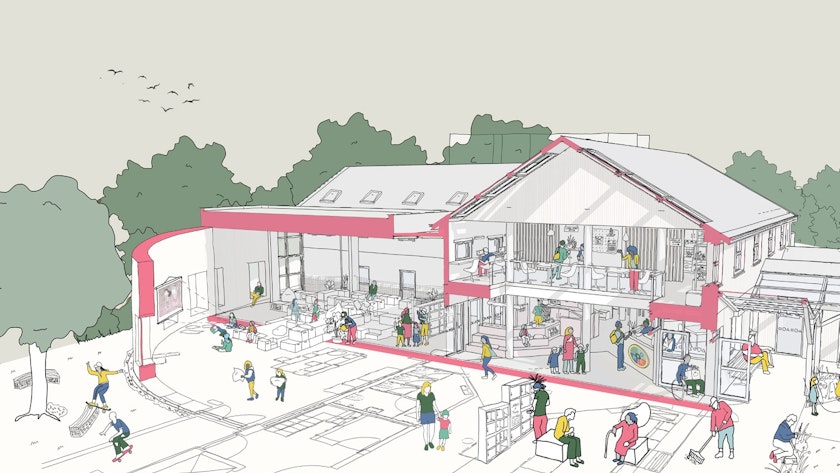Dr Carl Meddings introduces the work of some of our recent graduates from the final year of their studies on CAT’s Masters in Sustainable Architecture (MArch).
It is wonderful to see this year’s final year students’ work embodying our mission and that of the original volunteers who began CAT in 1973. They truly are pioneers, often finding themselves in unchartered territory, willing to push the boundaries of their knowledge to discover how they may become the changemakers that the profession so desperately needs!
Studying sustainable architecture is a passion. It is also a mission, which these students embrace wholeheartedly. The ethos of the course and of CAT is one of shared learning, mutual support and encouragement and, above all, a commitment to sustainability; not as a ‘bolt on’, but as the very foundation stone of the designing and making of buildings and places that respect the planet and its ecosystems and which will stand the test of time.
The students have shown, through their work, that CAT’s way of ‘doing architecture differently’ leads to earth respecting, socially resilient, life-enhancing designs.
CAT provides postgraduate-level education through the Graduate School of the Environment on a wide range of topics related to sustainability, including a Masters (Part II) in Sustainable Architecture for students training to be architects. This is the only rural-based and sustainability-focused architecture course in the UK.
We break the mould of traditional architectural education with a number of key themes at the heart of how we teach.
- We are a community of learners, with students, tutors and professors learning from each other.
- We provide an aesthetic education – materials, making and craft sit at the heart of what we do.
- We define sustainable architecture by fully doing architecture differently, acknowledging the impact of humanity on our planet and the need to act now.
Final Design and Dissertation Projects 2022–2023
The final design project provides students with the opportunity to develop a design concept relating to a subject and/or location that resonates with them. These projects follow some of the same stages that are seen in real-life architectural projects, giving students invaluable experience of the different aspects of design. Below are a few examples from this year’s cohort.
Georgemma Hunt – Centre for Alternative Materials (CAM)

Georgemma’s ‘Centre for Alternative Materials’ is an interdisciplinary education centre that balances nature recovery and material innovation through a focus on holistic land and resource management. Situated on the edge of a rehabilitated saltmarsh, the project takes a sensitive approach to increasing coastal resilience through the insertion of a porous shingle bank around a swathe of floodplains. The architecture itself is an educational tool through the specification and display of experimental landscape-derived materials that respond to the dry, porous and wetland conditions.
Em Edwards – The Supermarket Reimagined

This project uses the typology of the arcade to reimagine the supermarket as a place of interaction, production and exchange instead of one of anonymity and consumerism. It seeks to create food security in the historic market town of Oswestry within a changing future climate. The chosen site is adjacent to an alleyway, in response to dissertation research that concluded that these routes are made and maintained by walking, predating the car-dominated town centre. The site renovates and extends two existing buildings, a 1930s cinema and a Victorian furniture shop, and connects them using an arcade. Their heritage is celebrated through the new use within these redundant buildings.
Polly Orton – The CORE Centre

The CORE Centre is imagined as a hub for community resilience in Clifton, York. Through her design, Polly explores the development of sustainable self-sufficiency in a deprived neighbourhood. The scheme retrofits and extends a former elderly people’s home, which sits between a residential area and an expansive green space. Incorporating a community café, co-working space and library of things, the centre provides a radically inclusive community venue at the heart of an existing neighbourhood.
To view more of our MArch students’ projects and work, take a look at their Yearbook.
Live projects and site trips
Community consultation in Milford Haven – October 2021
This cohort’s first full design project was based in the Pembrokeshire port town of Milford Haven. The students carried out detailed group research into the history and context of the local area in order to develop a deeper understanding of the place in which we would be proposing our architectural interventions. The feedback received during the research process went on to inform subsequent design projects.
Materials Week – May 2022
Over the annual Materials Week, the students rotated between various workshops, learning from experts on topics including:
- Straw Bale Construction
- Earth Building
- Timber Grading and Structure
- Lime
- Fibre and Binder (Hemp Lime)

Scotland trip – September 2022
For the yearly study trip, the group travelled to Glasgow, from where they explored key sites, buildings and other towns and cities of notable interest, listening to a broad range of resonant voices from the different walks and flavours of architectural practice. This was in order to deepen their understanding of the profession, its complex history and widen their horizons to the infinite possibilities and directions in which they could take their own paths forward.
About the author
Carl is the Programme Leader for the MArch: Sustainable Architecture. He is an architect and educator with a passion for educating architects in a rapidly changing cultural and professional environment. Before teaching at CAT, he was the Subject Leader for architecture at the University of Huddersfield and has taught at all levels from first-year undergraduate to final year at masters and beyond. Carl is an active RIBA member serving on Validation Boards, the New Courses Group and the Membership Eligibility Assessment Panel.

- Graduate School
- Masters in Architecture
- Visitors Centre
Related Topics

About our Masters in Architecture (Part 2)
GRADUATE SCHOOL OF THE ENVIRONMENT
ACT NOW FOR A SUSTAINABLE FUTURE
Learn more about our exciting postgraduate courses and sign up for our emails to stay up-to-date on all the latest.
